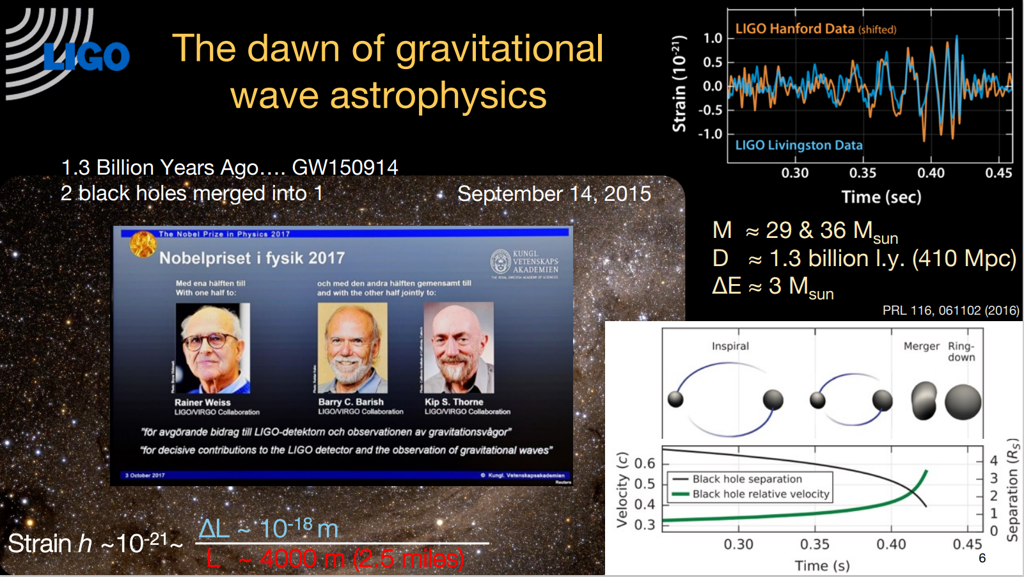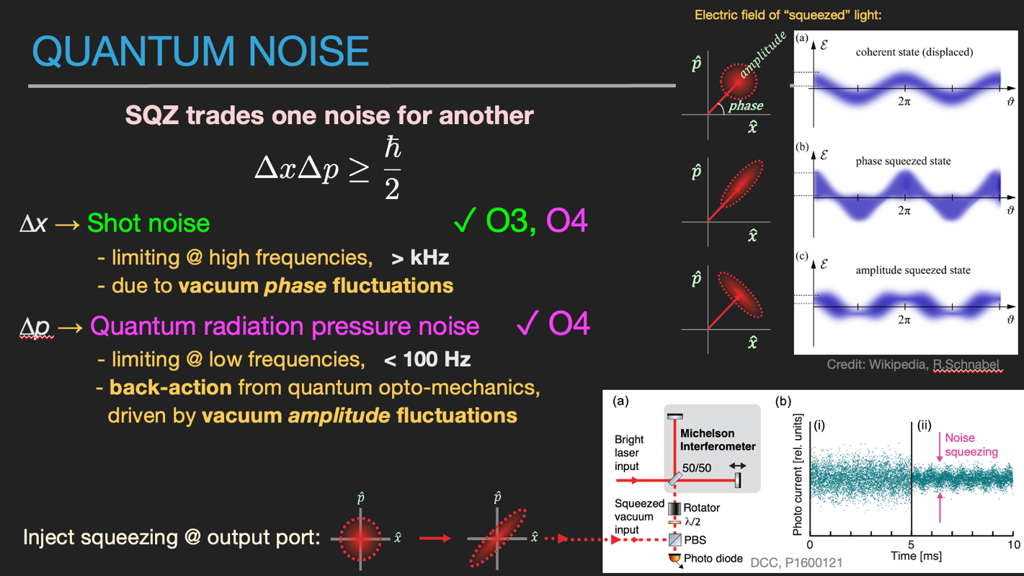At the quantum limit of gravitational wave detection
Becky Bosco, Senior Director of Corporate Communications, Optica
Quantum 2.0 refers to developing and using many-particle quantum superposition and entanglement in large engineered systems to advance science and technology. Optica’s Quantum 2.0 in Denver, Colorado, USA, brought together academics, engineers, national laboratory and industry scientists, and others working to advance quantum science and technology.
In April, the Optica Foundation announced that Victoria Xu, a postdoctoral scholar at the Massachusetts Institute of Technology (MIT) Kavli Institute for Astrophysics and Space Research - LIGO Laboratory, USA, was named the inaugural recipient of the Theodor W. Hänsch Prize in Quantum Optics. The Theodor W. Hänsch Prize in Quantum Optics provides recognition and funding for early-career professionals engaged in exciting and innovative projects that have the potential to make a meaningful and positive impact on the science and applications of optics-enabled quantum technologies. The 2023 prize recognized Xu’s contributions to using quantum optics to fundamentally improve metrology through large-scale interferometers and advanced gravitational wave detection.
From early breakthroughs in quantum coherence for trapped atom interferometry and applications of cavity-enhanced atom interferometers to precision tests of new physics, Xu has dedicated her career to using quantum optics and precision interferometry to advance the understanding of nature. Her current work focuses on commissioning quantum technologies into large-scale observatories for gravitational wave (GW) detection. Xu presented her work at Optica’s Quantum 2.0 Conference and explained the quantum limitations of GW detection.
The worldwide effort of gravitational wave interferometry
Gravitational waves went from a whisper to a shout when detected in September 2015. Using advanced optics-based systems, the global research team was able to measure gravitational waves on Earth, enabling them to pinpoint the precise moments they were produced. Unlike light, gravitational waves are not diminished by interstellar dust as they propagate through space. By detecting them, researchers can peer into the most energetic events of the universe, and explore the cosmos in a completely new way.

In late May 2023, the LIGO-Virgo-KAGRA (LVK) collaboration began a new observing run with upgraded instruments and other improvements to boost the search for gravitational waves, or ripples in space-time, generated by colliding black holes and other extreme cosmic events. The LVK collaboration consists of scientists across the globe who use a network of gravitational-wave observatories—LIGO in the United States, Virgo in Europe, and KAGRA in Japan. Together, the team works to detect objects in the stellar graveyard, such as black holes and neutron stars.
“The LIGO, Virgo and Kagra detectors are continuously improving their instruments to take more sensitive data in their upcoming observing runs. The twin LIGO detectors will begin the run with an increase in sensitivity of almost 30 percent. This increased sensitivity means that the detectors will observe a larger fraction of the universe than ever before, while picking up astrophysical gravitational-wave signals more often and with higher resolution,” explained Xu.
Two major detectors upgrades for the fourth observing run included doubling the interferometer laser power, and the filter cavity upgrade to frequency-dependent squeezed light injection—a more complex version of the frequency-independent squeezing employed by LIGO and Virgo in the previous year-long observing run, O3. In O3, the LIGO and Virgo detectors routinely operated with the injection of frequency-independent squeezed light, a straightforward application of quantum squeezing. However, the Heisenburg uncertainty principle dictates that quantum noise can only be reduced in one quantity at the expense of another, and so further quantum noise reduction in the interferometers became limited by the excess noise, i.e. by the excess opto-mechanical quantum back-action, associated with squeezed light injection. The detectors have now installed optical filter cavities to mitigate this back-action noise. “With the upgrade to frequency-dependent squeezing in LIGO, we have demonstrated the ability to handle the consequences of quantum back-actions at the most macroscopic scales of full LIGO interferometers, which required upgraded our system complexity without sacrificing performance. And we have done so in a meaningful way—because back-action degrades our sensitivity in the astrophysically-critical frequency band, overcoming this limitation directly expands our gravitational window into the Universe.”

"It is amazing that our demonstration of quantum optics can now directly expand our view of the dark universe through gravitational wave detection. I am only one small piece of our puzzle, and it is the work of our team here at LIGO that has enabled this milestone in quantum optics. I am grateful for the opportunity to participate in this project, and to work alongside such an incredible and welcoming group, where together we can commission one of the most sensitive detectors ever built," said Xu.
Xu concluded her presentation by reflecting on the path forward for gravitational-wave detectors, both present-day instruments and next-generation designs. Future gravitational wave detectors hope to utilize 10 dB of squeezing, which may be enabled by pushing the frontiers of low-loss optics, optical control systems, and back-scattered light in the interferometer. In almost 8 years since the first direct detection of gravitational-waves, Xu notes that approaching 100 events have been detected. “What will we discover next as we squeeze away quantum noise? Amongst many things, quantum metrology is expanding the observable horizon of gravitational wave astrophysics.”
To congratulate Victoria Xu on her award, Nobel Laureate Theodor W. Hänsch remarked “Please accept my warmest congratulations to the first winner, Victoria Xu. “This recognition is truly well-deserved, and I hope it serves as a springboard for a highly successful scientific career, leading to many more important discoveries in the future.”
More information about the observatories:
LIGO is funded by the United States National Science Foundation (NSF), and operated by Caltech and MIT, which conceived and built the project. NSF led financial support for the Advanced LIGO project with Germany’s Max Planck Society, the United Kingdom’s Science and Technology Facilities Council, and the Australian Research Council, making significant commitments and contributions to the project. More than 1,500 scientists worldwide participate in the effort through the LIGO Scientific Collaboration.
The Virgo Collaboration comprises approximately 850 members from 143 institutions in 15 countries. The European Gravitational Observatory (EGO) hosts the Virgo detector near Pisa in Italy. It is funded by Centre National de la Recherche Scientifique (CNRS) in France, the Istituto Nazionale di Fisica Nucleare (INFN) in Italy, and the National Institute for Subatomic Physics (Nikhef) in the Netherlands.
KAGRA is a laser interferometer in Kamioka, Gifu, Japan. The host institute is the Institute for Cosmic Ray Research (ICRR) at the University of Tokyo, and the project is co-hosted by the National Astronomical Observatory of Japan (NAOJ) and the High Energy Accelerator Research Organization (KEK). The KAGRA collaboration is composed of more than 480 members from 115 institutes in 17 countries.
